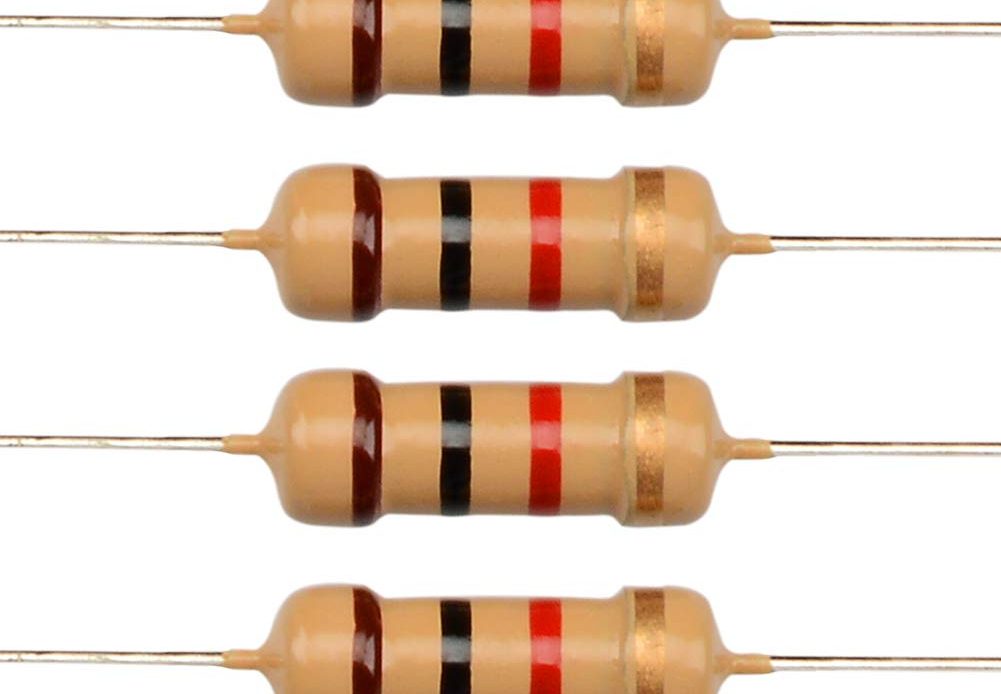A resistor is one of the most essential components in the world of electronics. Whether you’re building a basic circuit or designing a complex electronic system, resistors play a critical role in controlling the flow of electric current. In this article, we’ll explore what a resistor is, how it works, its types, applications, and why it’s so important in electronic circuits.
What is a Resistor?
A resistor is an electronic component that resists or limits the flow of electric current in a circuit. It is designed to have a specific resistance value, measured in ohms (Ω), that determines how much it opposes current flow. Resistors are used to manage current, divide voltage, and protect sensitive components from excessive current.
Resistors follow Ohm’s Law, which states that Voltage (V) = Current (I) × Resistance (R). This relationship is fundamental in understanding how resistors function in electrical circuits.
How Do Resistors Work?
Resistors work by converting electrical energy into heat energy as current flows through them. The material inside a resistor impedes the movement of electrons, thus controlling the amount of current that can pass. This resistance is determined by the material’s properties and the physical dimensions of the resistor.
For example, a thin, long resistor made of a high-resistance material will have more resistance than a short, thick resistor made of a low-resistance material.
Types of Resistors
There are several types of resistors, each suited for different applications:
1. Fixed Resistors
These have a constant resistance value that does not change. They are the most commonly used type of resistor. Examples include carbon film resistors and metal film resistors.
2. Variable Resistors
Also known as potentiometers or rheostats, variable resistors allow the resistance to be adjusted manually. These are used in volume controls, dimmer switches, and tuning circuits.
3. Wire-Wound Resistors
Made by winding a wire of high-resistance material around a ceramic core, these resistors are used in high-power applications due to their ability to dissipate heat efficiently.
4. Surface Mount Resistors (SMD)
These are tiny resistors used in surface-mount technology (SMT) and are found in compact electronics like smartphones and laptops.
5. Thermistors and Photoresistors
These are special types of resistors whose resistance changes based on temperature (thermistors) or light intensity (photoresistors). They are used in sensors and control systems.
Applications of Resistors
Resistors are found in nearly every electronic device. Here are some common applications:
- Voltage Regulation: Resistors help divide voltage across components in a circuit.
- Current Limiting: They protect components like LEDs from receiving too much current.
- Signal Conditioning: In audio and radio equipment, resistors filter or shape electrical signals.
- Timing Circuits: Used with capacitors, resistors help create time delays or oscillations.
- Heating Elements: In electric heaters, high-power resistors convert electricity into heat.
How to Identify Resistor Values
Most resistors have color-coded bands that indicate their resistance value. This resistor color code consists of four or five bands, each representing a number or multiplier. For example, a resistor with bands of red, violet, and yellow represents a resistance of 270,000 ohms or 270kΩ.
There are also digital multimeters that can measure resistance directly, which is especially useful when the color bands are hard to read.
Choosing the Right Resistor
When selecting a resistor for a circuit, consider the following factors:
- Resistance Value (in ohms)
- Power Rating (how much heat it can safely dissipate)
- Tolerance (the accuracy of the resistance value, typically ±1%, ±5%, etc.)
- Size and Package Type (through-hole vs. surface mount)
Using the wrong resistor can cause circuit failure, overheating, or even component damage, so it’s crucial to choose wisely.
Conclusion
Resistors may be small in size, but they have a massive impact on how electronic circuits operate. From limiting current to dividing voltage and providing precise control over electrical signals, resistors are fundamental to modern electronics. Whether you’re a beginner in electronics or an experienced engineer, understanding how a resistor works and how to choose the right one is key to designing reliable and efficient circuits.




